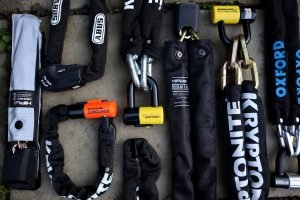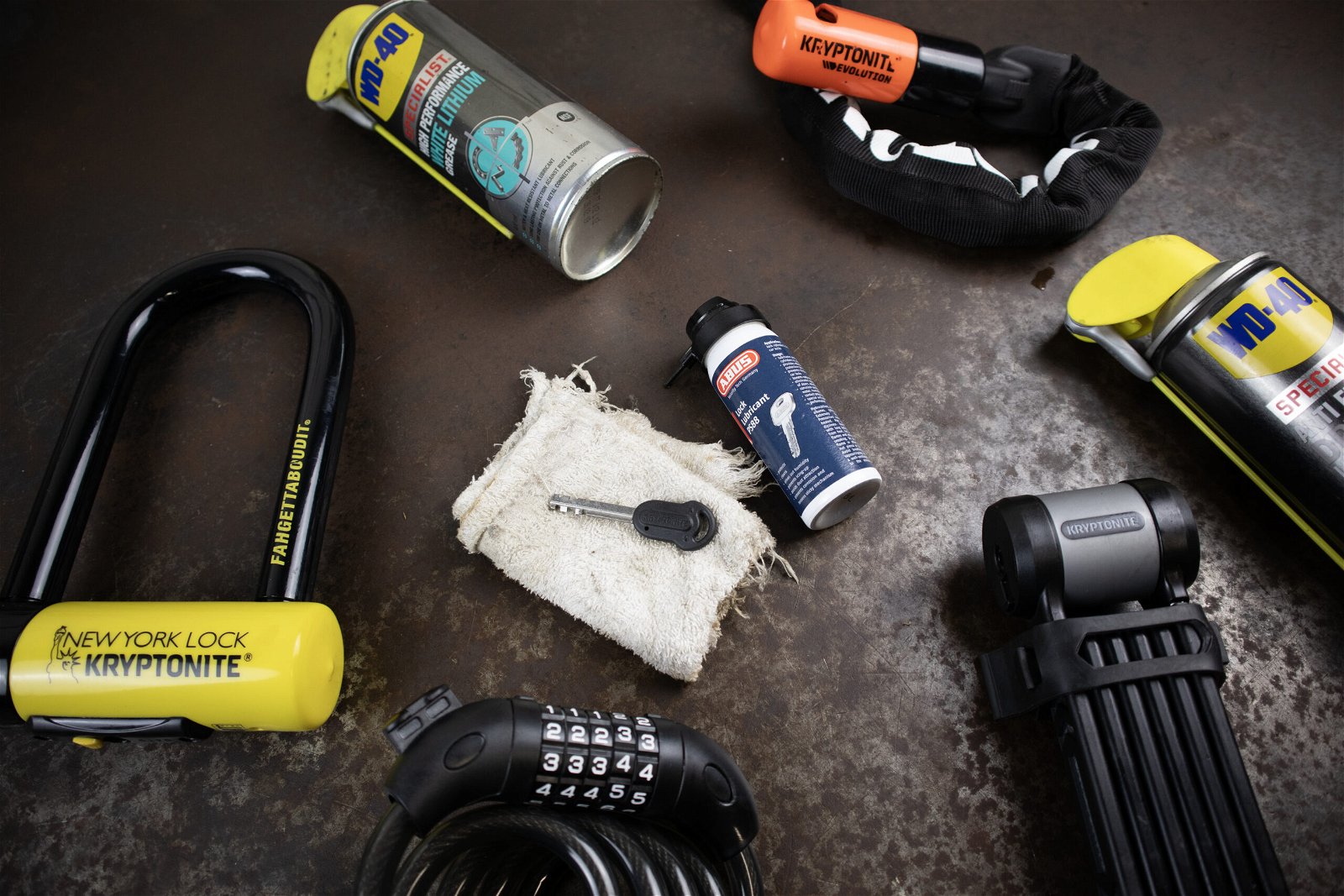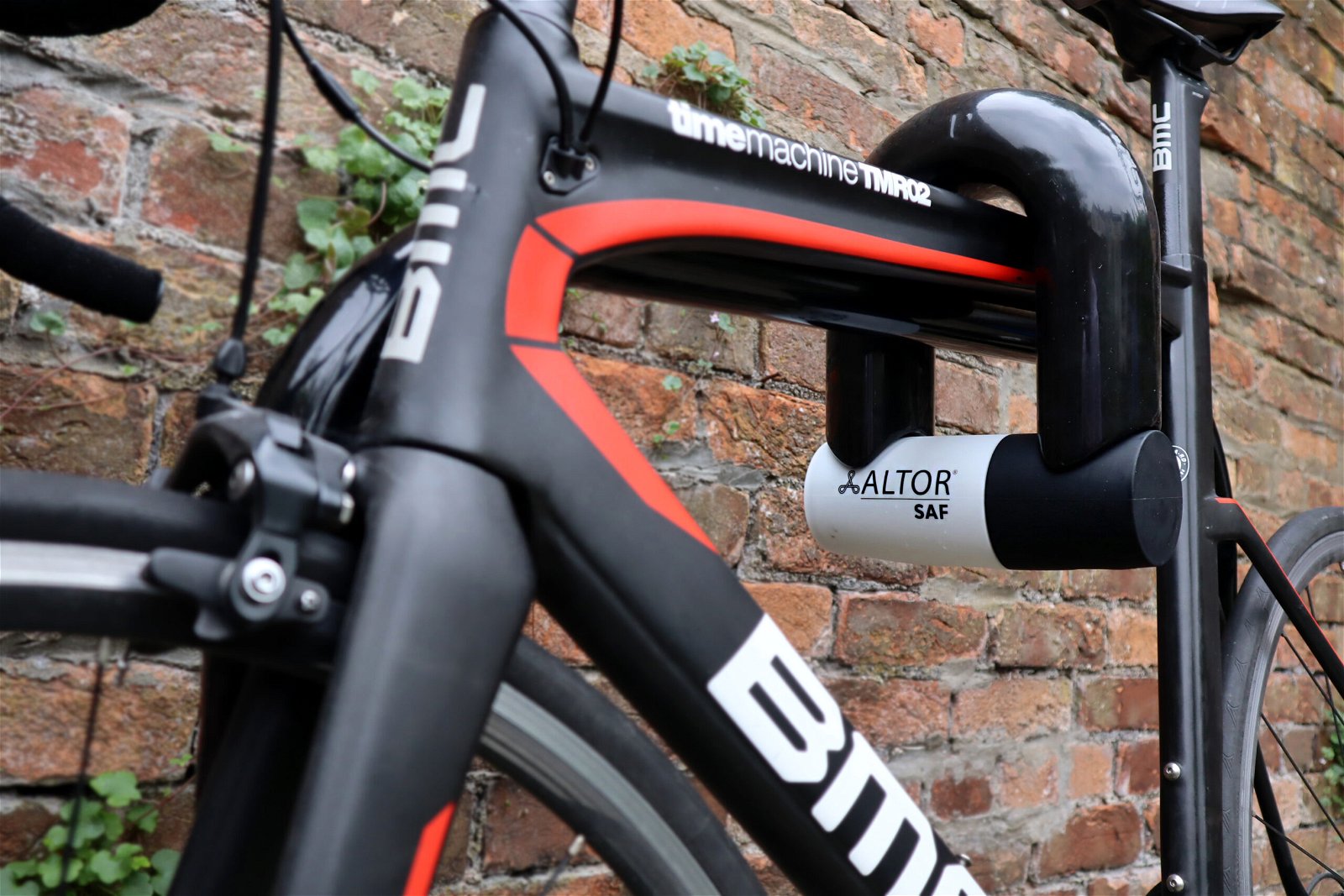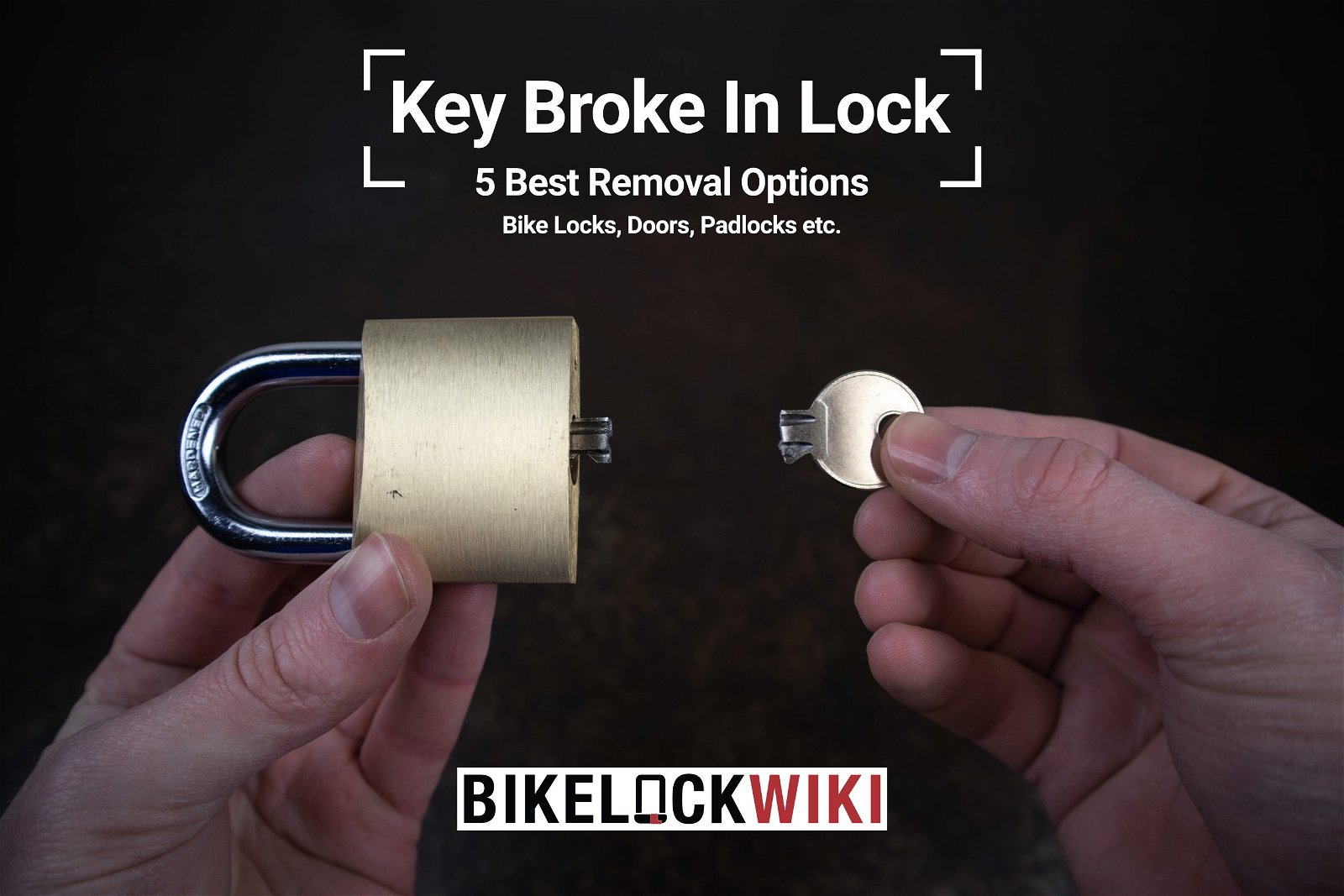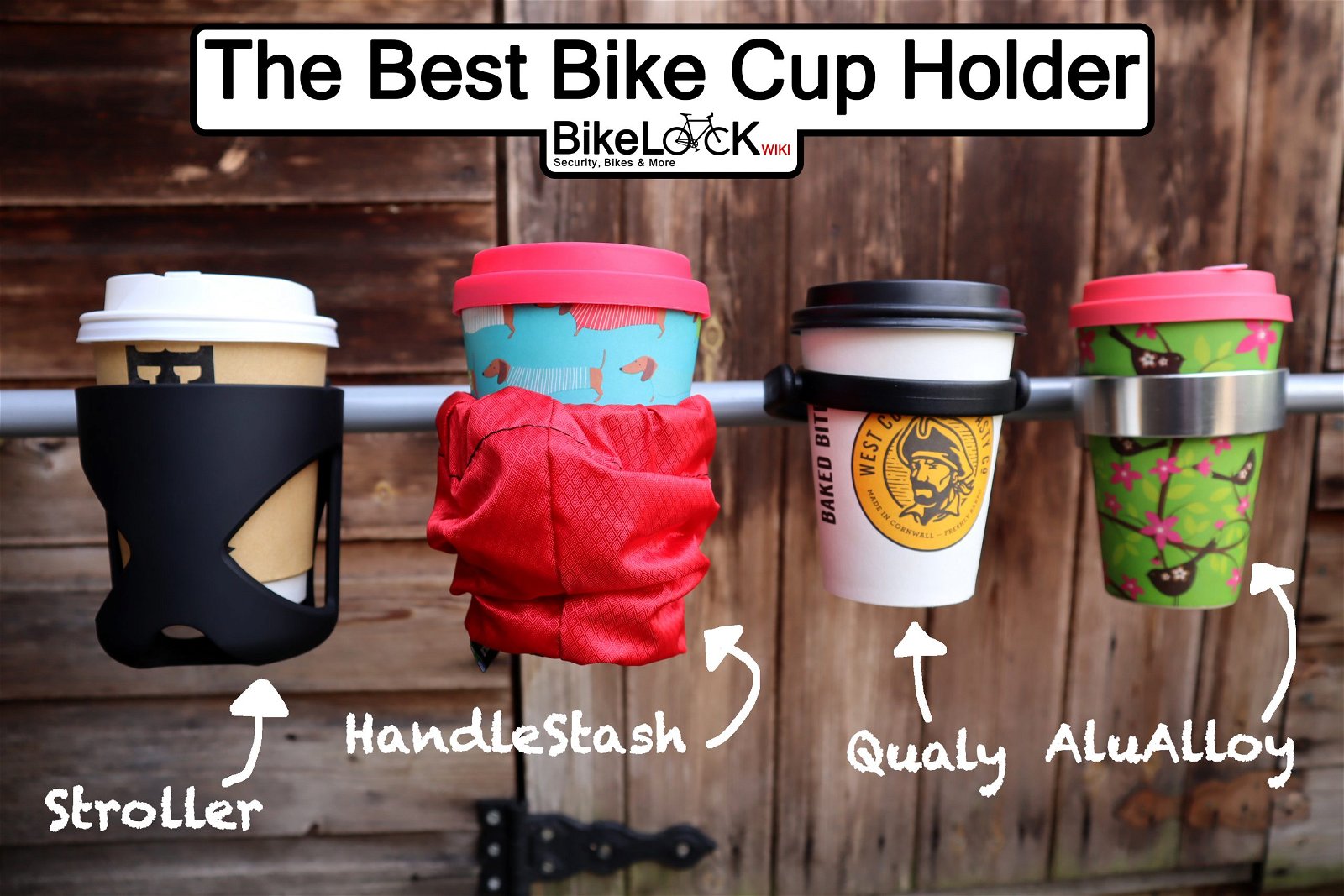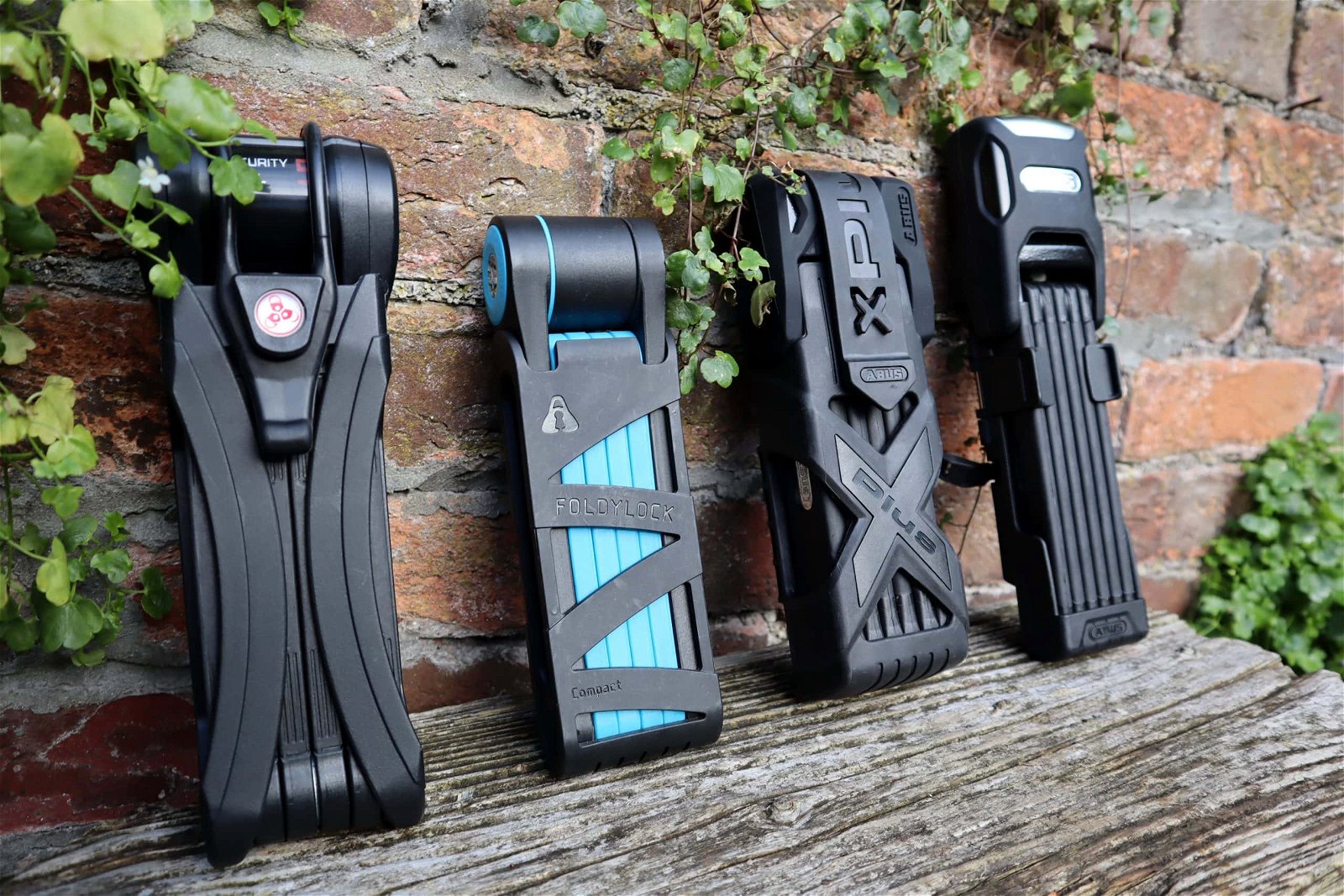
An Introduction to TT Bikes
So you’re curious about TT bikes, and rightly so! These futuristic-looking bicycles provide a plethora of benefits for their riders, but what is a TT bike? and how much does a TT bike cost?
If you’ve got questions similar to those above, you’ve come to the right place, because we have the answers.
In this guide to TT bikes, I’ll answer all of your TT bike-related questions, plus lots lots more.
Ready to become a TT bike expert? Let’s get into it!
What is a TT Bike?
TT bikes, commonly referred to as time trial bikes, are a type of bike that has been specifically made for competitive time trial race.
During these races, competitors race against the clock and attempt to achieve the fastest time across a set route.
Whilst TT bikes may appear similar to road bikes, they are much more aerodynamically efficient, have a shorter wheelbase and a much steeper seat tube angle.
The steep seat tube angle a TT bike provides positions riders in a horizontal position and places their body further over the handlebars.
Later in the article, I’ll explain how all of these features benefit TT bikes performance.
Manufacturers of time trial bikes, aim to create the fastest and most aerodynamically efficient bike possible whilst adhering to the rules of the UCI (Union Cycliste Internationale) which I’ll also cover later!
What is a TT Bike Used For?
As its name suggests and as we’ve already found out, time trial bicycles are used for competitive time trial cycling.
In this cycling discipline, riders are tasked with completing a course solo, whilst racing against the clock and the finishing times of previous and following riders.
The UCI, the world governing body for competitive cycling have certain rules and restrictions which each and every TT bike must comply with to be considered roadworthy.
Due to the nature of most time trial races, TT bikes are best suited for roads that are paved and smooth without too many hills or rugged terrain.
This is because TT bikes aren’t equipped to handle instability or unpredictable obstacles.
History of TT Bikes
While road racing with time trial elements has been around since the late 19th century , it wasn’t until much more recent years that progress was been made towards producing the TT bikes that we now know.
Riders, manufacturers and most importantly the UCI’s rules & regulations have transformed road bikes into the new breed of bike we now refer to as TT bikes.
One of the most important moments that put aero bikes on the map and was when Greg Lemond won the 1989 Tour de France with aero bars on his bike, completing the fastest time trial stage in history (in 1989).
So what are these UCI rules you ask? Keep reading and I’ll fill you in on all the details.
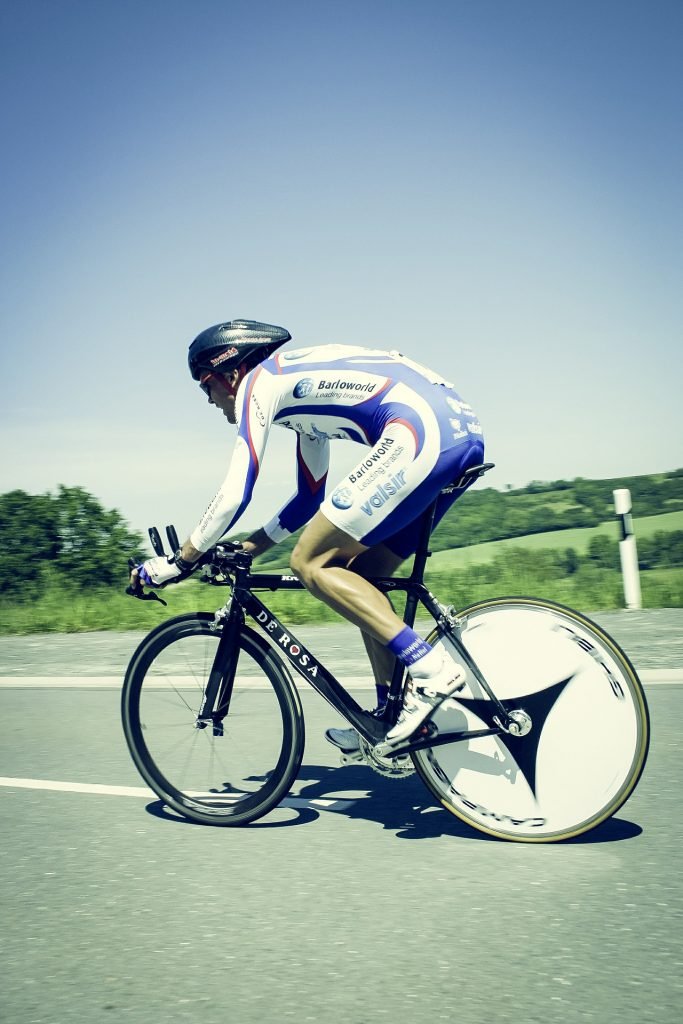
How Have TT Bikes Progressed Over the Years?
Over the years, as more and more money has entered the sport of cycling, the demand for faster and more efficient bikes has been never-ending.
Manufacturers spend millions on the latest technology to test their new bike prototypes, all in an effort to out-perform rival brands.
As I also covered above, the UCI has introduced various rules over the years that demand certain requirements to be met. Below you’ll find the up to date rules.
TT Bike UCI Rules & Regualtions
“A bicycle shall not measure more that 185cm (72.8″) in length and 50cm (19.7″) in width overall.”
The peak of your saddle on a TT bike must be a minimum of 5cm (1.97″) behind the bottom bracket for it to be compliant with UCI rules.
Riders who feel they should not have to adhere to these rules should inform the commissaires pannel at the time of the bike check.
Between saddle and handlebars, only one exemption may be requested for morphological reasons.
Aero bars hall extend no more than 75cm (29.5″) in front of the bottom bracket.
If saddle is positioned more than 5cm (1.97″) from the bottom bracket a maximum of 85cm (33.46″) can be applied for aero bars.
A riders saddle must not be angled at more than plus or minus 9°.
Riders must use a saddle that has a minimum length of 24cm (9.44″) and a maximum of 30cm (11.81″) (5mm tolerance allowed).
“The Distance from the bottom bracket spindle and the ground shall be between 24cm (9.44″) minimum and 30cm (11.81″) maximum.”
A TT bike must have a double diamond frame (triangular frame).
Every frame tube shall be no wider than 8cm (3.15″) and no thinner than 2.5cm (0.98″) in any direction.
Handlebar extensions should raise no more than 10cm above the elbow pads.
Elbow rests used in conjunction with handle bar extensions may have a maximum inclination of 15°.
The weight of the bicycle cannot be less than 6.8kg (15lb).
TT Bike VS Other Bike Types
Road Bike vs Time Trial Bike
Road bikes are definitely the more popular choice when it comes to road bike vs TT bike, but what benefits does either bike provide and which is the better option for you?
Weight
As we’ve established TT bikes are optimised for aerodynamics, they use thicker aerofoil shape frames that can reach up to 8cm wide.
When you include this along with their deep-section and disc wheels TT bikes tend to be around 1-2kg (2.2-4.4lb) heavier than road bikes.
This substantial weight difference means that your average TT bike will be slower off the mark than the average road bike. The extra weight would also impact your speed on hill climbs.
Usability
A TT bike is designed to be used in one environment, competitive time trial races.
Some cyclists choose to train on their TT bike, but many others train on a road bike and only use their TT bike whilst competing.
TT bikes have an extremely aggressive riding position, which isn’t hugely comfortable. If you’re going for a casual ride with friends, a TT bike won’t be suitable. For casual rides or commuting to work, a road bike will be much more suitable.
Due to the excessive cost of a time trial bike and its components, you’d also want to avoid locking it up around town. It wouldn’t be long before someone attempted to steal your bike or at least attempt to remove its components!
Handling
The narrow aero bars of a TT bike are designed with aerodynamics in mind, handling is less of a concern.
Wider handlebars provide more precision when changing direction when cycling. This means that the wider drop handlebars of a road bike will normally provide better handling than those of a TT bike.
Furthermore, the disc and deep-section wheels a TT bike uses can be exceptionally hard to ride with strong crosswinds. The rim’s large surface area gets caught by the wind and can throw riders off-balance, especially when the wind comes in gusts.
TT Bike Vs Tri Bike
At a glance, it can be difficult to spot the differences between a TT bike and a triathlon bike.
Below I’ll cover the different benefits and characteristics of either type of bike.
Perhaps the main difference between these TT bikes and tri bikes is that a TT bike and its components must adhere to strict UCI rules.
Triathlon bikes do not have to obey rules set by the UCI, which means you’ll find a lot more variation and innovative bike types, designed for triathletes.
Geometry
When it comes to the geometry either of these bike types offer, there’s only a very marginal difference.
Time trial races don’t tend to go on for much longer than an hour, subsequently, TT bikes sit riders in a very aggressive aero tuck position.
This isn’t comfortable and would be difficult to sustain for hours whilst completing an iron-distance triathlon but it provides optimal aerodynamics.
As I’ve also just covered, the UCI rules and regs only apply to TT bikes, which means most tri-specific bikes can’t be used in UCI adhering events.
The majority of triathlon bikes are designed with a steeper seat tube angle. This allows triathletes to push their hips further forwards and save their hamstrings for the running stage.
To find out more about how these UCI rules impact TT bikes, read the UCI rules towards the top of the page!
Mounts & Accessories
One of the biggest differences when it comes to TT bikes vs tri bikes is the storage options either bike offer.
Because triathletes will regularly be cycling in all-day events they will require plenty of liquids and nutrition to keep them fueled throughout the event.
This means most dedicated triathlon bikes will use top tube boxes for easy access to liquid and nutrition storage, as well as integrated liquid storage within the frame or frame-mounted hydration system.
Most tri-specific bikes will also incorporate some form of tool & spare part storage within the frame. Normally tools and spare tyres and tubes can be found in a box attached to the rear of the seat tube or integrated into the rear of the top tube.
TT bikes won’t normally feature as many storage boxes, however, some riders will still carry bottles of water and some minimal nutrition.
Which Is Better - TT Bike VS Tri Bike
Ultimately the bike you choose is going to be dependant upon which discipline of cycling you wish to pursue more.
If you’d like to take part in TT races and triathlon events, a TT bike might be more suitable as it’ll comply with UCI regulations and you’ll be capable of riding it in both events.
Whilst TT bikes are normally not as comfortable as tri-specific bikes for long periods of time, you can equip one with adjustable components which alter your overall riding position, making longer rides more comfortable.
TT Bike Components & Defining Characteristics
Over time TT bikes have shifted from steel frames, to aluminium, and now the best TT bikes use high-end carbon fibre frames.
Manufacturers use and produce new carbon frames all the time, from the T700 Hi-Mod UD carbon used on the Vitus Auro CRS TT to the Trek Speed Concept which uses OCLV Carbon there are too many carbon fibre types to list.
The frame of a TT bike is designed to not only be fast in a headwind, but also in crosswinds. The tube shapes from bike to bike do vary and have changed drastically in shape over time.
The most popular tube shape is now variations of Trek’s Kamm Tail Virtual Airfoil. This shape of frame provides advantage over the traditional airfoil shape when adhering to the UCI’s rules & regs.
Normally a World Tour TT will last no longer than an hour, meaning riders are able to ride sustain a less comfortable ride on a TT bike offering an aggressive riding position.
The handlebars found on a TT bike are called aero bars. These manipulate headwinds to produce the best aerodynamics possible for the rider.
Aero bars are used not only on TT bikes, but triathlon bikes too. These streamlined handlebars offer two different riding positions; one more relaxed riding position with outer bars similar to bullhorn handlebars, and an aggressive central tuck position where aerodynamics are at their best.
Aero bars can be made from a variety of materials including aluminium, carbon and titanium. They’re also available in two primary types: Clip On Aero Bars and Full Aero Bars.
Most lower end TT and Tri bikes use clip on aero bars, which simply clip onto your existing handlebars and screw in place.
Higher end bikes will normally use full aero bars which are a one piece unit with integrated stems and aero bars.
Whilst full aero bars are significantly more expensive than their clip on counterparts, they are proven to provide much better aerodynamics, so you’ll see these used by all professional TT and Tri athletes.
Another feature you may have noticed is popular with TT bikes is their super deep rims.
As you’ve probably guessed these provide better performance in terms of aerodynamics compared to a regular stock wheel you’d find on a road bike.
Riders will often adapt their wheels to the riding conditions on the day. Whilst disc wheels are the best performing aerodynamically, they catch the wind easily and will sometimes be replaced with a deeper rimmed wheel.
Many TT riders will opt for a rear disc wheel with a deep section front wheel.
UCI rules have banned the use of front disc wheels for safety reasons.
High end Disc wheels and other deep section wheels are almost always made from carbon fibre. This allows them to remain lightweight at the same time as cutting through the air.
As time trials tend to take place on flatter terrain with less hillclimbs, many TT bikes can now be found with a 1x setup.
A 1x setup is a gear system with a single chainring upfront and any number of gears on the cassette. This single chainring allows for a straighter chain, increasing efficiency.
Other riders choose a 2x setup normally starting with 53/39 front chainrings, with a 12/25 cassette. This is a good starting point for newer riders to begin with and then changes can be made with progression or to suit the course you’re riding.
When it comes to braking options with TT bikes you have two choices, disc brakes and rim brakes.
Until mid 2018 disc brakes had been “on trial” by decision of the UCI and were banned at points before this. However, you’re now free to ride with disc brakes.
Disc brakes are now becoming more and more popular thanks tho their increased braking power. However, many riders, especially pros still opt for the classic rim brakes for their reduced weight and maintenance demands.
Most high end TT bikes that use disc brakes have them built into the frame to allow for the best aerodynamic possible. Sometimes the rear rim brake will be positioned under the rear wheel rather than above it, with the front rim brake will normally being hidden inside the front fork.
You’ve probably caught the gist of it by now. TT bikes are designed to be as aerodynamically sound as possible, this theme also applies to the seatpost and saddle.
TT bikes are not built for comfort, and this is reflected by their minimalistic, alien spaceship looking saddles.
An ill-fitting saddle can cause pain and discomfort whilst riding, which can easily negate the difference your disc wheel and aero bars make.
In essence, you’ll need to try a few different saddles with your existing setup before settling on the best fit.
Otherwise, many specialist cycling shops offer a saddle fit service that will help you find the most suitable saddle for your TT needs.
Who Should Use A Time Trial Bike?
If you’ve already mastered road bikes and want equipment that will give you the potential to shave down the seconds of your best times, you are suited for the speed that a TT bike will grant you.
Additionally, the forward-leaning position of these bikes is best suitable for physically fit and flexible riders without prior back issues.
Individuals who are dedicated to time trial racing are going to get the most out of TT bikes. Since TT bikes serve a specific role and don’t perform well for commuting, casual riding, and other terrains, they are the most suitable for riders serious about the competition.
So, if you are a cyclist who is ready to focus all of their time, energy, and a large amount of money on TT racing, you are part of the population that will reap the most benefits from these bikes aerodynamically tuned bikes.
Who Shouldn't Use A Time Trial Bike?
Taking in scenery or riding along a beach with a group of fellow biking friends is best left with a different bike model.
Since TT bikes don’t perform well on rocky terrain or whilst off-roading, riders looking for a bike that can do it all will be disappointed by the single-use these bikes offer; speed on paved roads.
Individuals who suffer from back or spine pain would have some trouble adjusting to the less than ideal riding position that TT bikes offer.
All in all, I wouldn’t reccommend a TT bike to anyone who isn’t looking to get involved in competitive cycling. Whilst TT bikes are nice to look at, they can be a real pain in the neck (and back!) to ride.
What Competitions/Events are TT Bikes Used In?
At the Olympic level, time trial races have played a role in every summer Olympic game since its creation in 1896, and since 1996, they added men and women’s individual road time trials.
During longer stage races such as the Tour De France, time trials can be utilized in portions of the race.
Not only are TT bikes found in these races, but similar versions have also been popularized in the triathlon community since they offer similar aerodynamic qualities to the ever-popular triathlon bike.
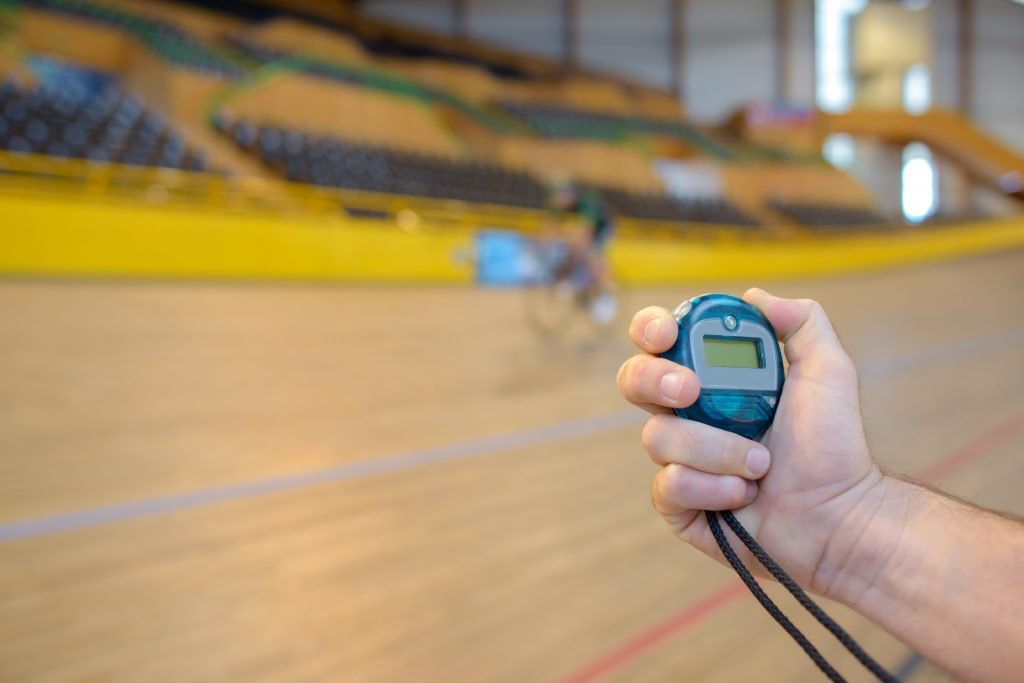
What Are the Benefits of TT Bikes
| Pros | Cons |
|---|---|
| Fastest bicycles for road racing | Expensive compared to other types of bike |
| Superior aerodynamics compared to other bikes | Only suitable for one style of cycling |
| Lightweight components designed for speed | Complex maintenance due to specialised components |
| Headturner | Carbon wheels with rim brake surfaces offer reduced braking capabilities |
| TT bikes which comply with UCI rules can be used | Harder to ride in strong winds and dangerous to ride when gusty |
How Much Do TT Bikes Cost?
To find out the average cost of a TT bike, I randomly selected 10 different UCI legal TT bikes. Some are older than others and some are higher spec. Whilst my choices were random, there’s good variety in the bikes selected.
When choosing these bikes my selection process was random and I simply searched for UCI legal TT bikes.
The table below displays the make, model and price of each bike, finishing with the average cost of a tt bike.
If you’d like to find out how much a tt bike weighs, see the table below.
| Make & Model | Price (RRP) |
|---|---|
| Cube Areium C:68 TT SL High | £6,999 ($9,740) |
| Giant Trinity Advanced Pro 2 2020 | £2,999 ($4,170) |
| Cervelo P-Series 105 Disc TT 2020 | £2,899 ($4,050) |
| 2019 Boardman ATT 9.0 | £1,900 ($2,650) |
| S-Works Shiv TT Disc | £11,999 ($16,730) |
| Canyon Speedmax CF SLX 9.0 TT | £10,249 ($14,290) |
| Orbea ORDU M20iLTD | £7,199 ($10,040) |
| Vitus Auro CRS Disc TT Bike | £3,199 ($4,460) |
| Argon 18 E-117 Tri | £3,620 ($5,050) |
| Felt B Performance Ultegra Mix 2020 | £1,640 ($2,299) |
| Average TT Bike Cost |
|---|
| £5,109 ($7,140) |
From the 10 TT bikes which I selected at random, they give an average cost of £5,270 ($7,380) for a TT bike.
So if you’ve been asking how much does a TT bike cost £5,270 ($7,380) is the average price. For this money, you’ll receive a quality TT bike that will perform well and compete with the better bikes out there.
This may seem expensive, but due to the highly competitive nature of TT cycling, small changes and marginal improvements in aerodynamics can be costly.
Several of the bikes in this list have been used in professional TT races, whilst others are suitable for amateurs.
It’s also important to bear in mind that bike prices will vary based upon the components they’re sold with.
How Much Does a TT Bike Weigh?
Now that we’ve calculated how much a TT bike costs, let’s look at how much a TT bike weighs.
I’ve used the same randomly selected bikes as I used above, all of which are UCI legal but have left the Argon 18 out as accurate weights for a complete bike with stock components aren’t avalible.
As I’ve covered, decreasing weight isn’t an aim with TT bikes. Instead, manufacturers and riders attempt to optimise their bikes for the best aerodynamics possible.
With that in mind, how much does a TT bike weigh?
| Make & Model | Weight |
|---|---|
| Cube Areium C:68 TT SL High | 9.4kg (20.7lb) |
| Giant Trinity Advanced Pro 2 2020 | 10.1kg (22.2lb) |
| Cervelo P-Series 105 Disc TT 2020 | 9.5kg (20.9lb) |
| 2019 Boardman ATT 9.0 | 8.9kg (19.6lb) |
| S-Works Shiv TT Disc | 9.9kg (21.9lb) |
| Canyon Speedmax CF SLX 9.0 TT | 8.2kg (18lb) |
| Orbea ORDU M20iLTD | 8.6kg (19lb) |
| Vitus Auro CRS Disc TT Bike | 9.8kg (21.6lb) |
| Felt B Performance Ultegra Mix 2020 | 8.8kg (19.4lb) |
| Average TT Bike Weight |
|---|
| 9.24kg (20.37lb) |
So for those of you that have been asking, “how much does a TT bike weigh” the average weight of a TT bike is 9.25kg (20.39lb).
Again the weights of the bikes above were taken when stock components were fitted. Also, bike frame sizes will affect the overall weight of a bike.
The majority of the weights supplied above were from medium-sized bikes, with a few being small.
As you can see from the table above, all of these bikes are easily compliant with UCI weight regulations, which state a bicycle must weigh at least 6.8kg (15lb).
Does the Bike Require Anything to Keep Functioning?
Time trial bikes are used in competitions, so they may not be the same bikes you train on.
You will want to make sure your TT bike is well maintained and check the tires, chain, and brakes for functionality and problems before and after racing.
When storing your TT bike, make sure that the chain is clean and well lubricated.
Without knowledge of the complex components some TT bikes use, you may be better off taking your TT bike to a specialist mechanic.
What to Wear When Riding a TT Bike
When riding your TT bike, you’ll want to wear skintight clothing. Skinsuits are a great choice, they’re a one-piece cycling jersey that reduce drag and allow air to flow around your body.
Cycling shoes are a must-have when competing in a TT race, many riders also use overshoes which increase your overall aerodynamics.
The gains from overshoes may be marginal, but a split second can be the difference that earns you your first podium finish.
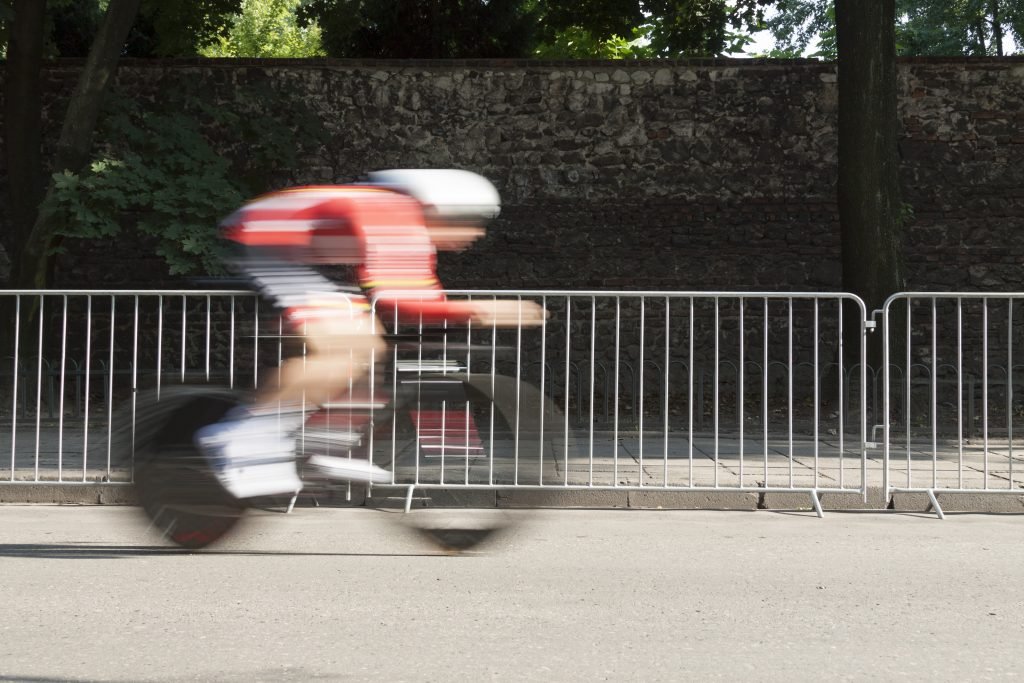
The main thing you want to think of when looking for clothing to use when riding your TT bike is whether it will improve your speed.
As always, wear a helmet whenever cycling. Many TT riders opt for teardrop helmets which provide the best aerodynamics whilst racing, but do cost considerably more than a regular helmet.
What Accessories are Recommended When Using a TT Bike?
Bike lights are a must-have whilst training for TT races. Lights will help in ensuring that you are seen.
You may want to save on those extra few grams, but how will you be seen when riding home from a race? Be safe, be seen.
When you’re looking for clothing and accessories, choose products that are specifically made to be “aero” are the way to go, such as aero drink mounts and packs.
Bike computers are also a popular accessory for TT bikes. These will allow you to accurately monitor your progress and allow you to set and follow a pace whilst competing.
Summary - What Is a TT Bike?
So there you are! I hope you’ve found this beginners guide to TT bikes helpful.
You should now understand what a TT bike is, the benefits they offer and who they’re suitable for.
In case you missed it, a TT bike is a bicycle used for the competitive cycling discipline of time trialling. During these events, cyclists race against the clock and compete for the fastest time across a set route.
Due to the intensely competitive nature of these events, TT bikes are solely optimised for speed. Every component a TT bike uses has been tuned for the best aerodynamics possible.
If you’re looking for a commuter bike or a comfortable bike to ride on weekends, look elsewhere!
I hope I’ve answered all of your TT related questions, but if not leave a comment down below and I’ll get back to you right away!
Feel free to check out a few of my other articles, if you’d like to learn more about different types of bike, you can do so here.
As always, lock it or lose it!
Ciao for now.



